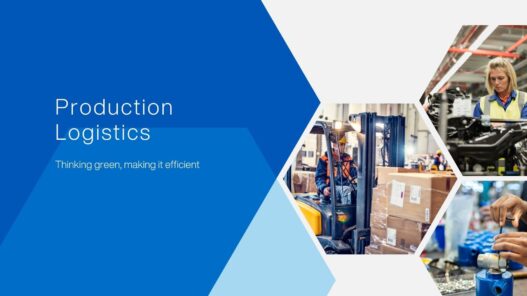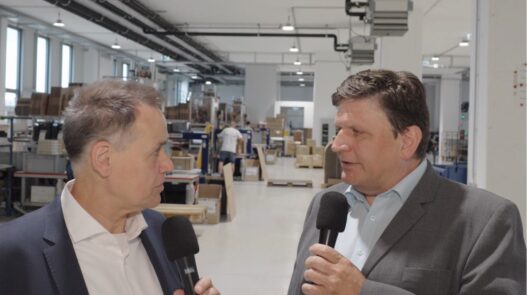Hidden environmental influences: Where production logistics comes in
Many ecological impacts are not caused by obvious mistakes, but by everyday processes:
- Material movements within the plant tie up resources. Every unnecessary journey consumes energy, increases wear and tear and causes emissions.
- Storage areas and intermediate buffers not only cost space, but also lighting, heating or cooling – often for many hours or even days.
- Processes that are not coordinated lead to downtime, multiple movements or overproduction. All of them have negative effects on the environment and costs.
Tip: The throughput time is a meaningful indicator. Long periods indicate inefficient processes, high inventories and unnecessary material movements. All of this has a direct impact on the environmental balance.
This is how production logistics improves the environmental balance:
- Value stream mapping with environmental glasses
In addition to goods flow, cycle time and inventory, ecological parameters should also be included in the analysis, e.g. energy consumption per process step or CO₂ emissions per order.
Practical tip: Integrate environmental aspects directly into the value stream map, for example as additional symbolism or key figures. This makes it possible to see where efficiency and environmental advantages coincide.
- Shorten distances, bundle transports
A well-thought-out factory layout significantly reduces internal transport, as shorter distances save electricity, time and driving movements.
Practical tip: When planning layouts, pay attention to centralized material provision and logical sequences. Even more effective: Set up material flow simulations in advance. In this way, energy savings can be calculated in concrete terms.
- Use automation in a targeted and energy-efficient way
Automated systems are not energy-intensive per se. Modern AGVs, storage and retrieval machines or conveyor technology often work more precisely, faster and more economically than manual alternatives.
Practical tip: Use the standby mode of systems, intelligent driving strategies and optimized drive power. Predictive maintenance (detecting and preventing failures of systems or machines at an early stage) reduces unplanned downtimes and increases the service life of the technology. Predictive maintenance is therefore good for the environment and for the budget.
- Demand-based delivery instead of rigid buffers
Optimized JIT/JIS delivery reduces the need for large intermediate warehouses. This saves space, lighting, air conditioning and personnel costs.
Practical tip: Combine real-time data from ERP/MES with flexible transport strategies. This not only makes the supply of materials leaner, but also more sustainable.
- Integrate facility management
Building technology often has a greater impact on the environmental balance than you might think: lighting, ventilation, heating systems or compressed air systems have high energy requirements.
Practical tip: Be sure to involve facility management and energy officers in layout changes or process adjustments. Why? Even small changes to lighting control, heat recovery, etc. often bring above-average savings with little investment.
Digitization brings transparency
- IoT sensors record energy consumption live down to the workplace level.
- Digital dashboards make ecological key figures visible and thus controllable.
- AI-supported planning helps to shift energy-intensive processes to more favorable time windows or avoid unnecessary movements.
Frequently Asked Questions (FAQ)
- How great is the effort for environmentally conscious production logistics?
Many measures can be implemented with little effort – and often even save operating costs.
- Where to start when resources are scarce?
A simple analysis helps here: Where does the most transport originate, where is the most energy consumed? Even the first optimizations bring noticeable effects.
- Is automation really environmentally friendly?
Used correctly: Yes. Modern systems are often more efficient, precise and durable. Especially in connection with smart control and recovery systems.
- Are there subsidies for environmentally friendly logistics measures?
Yes, many countries offer investment subsidies for energy efficiency, digitalisation and sustainable logistics solutions – so the investment can be doubly worthwhile.
Conclusion: Production logistics is a real key area when it comes to a company’s environmental footprint. Those who start here not only improve their CO₂ balance, but also increase transparency, delivery reliability and cost efficiency. Many measures can be implemented in a practical way – with measurable benefits for the environment and the company.
Would you like a professional view of your production logistics?
Discover what we can achieve together. We look forward to a non-binding introductory meeting with you.


